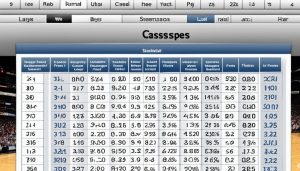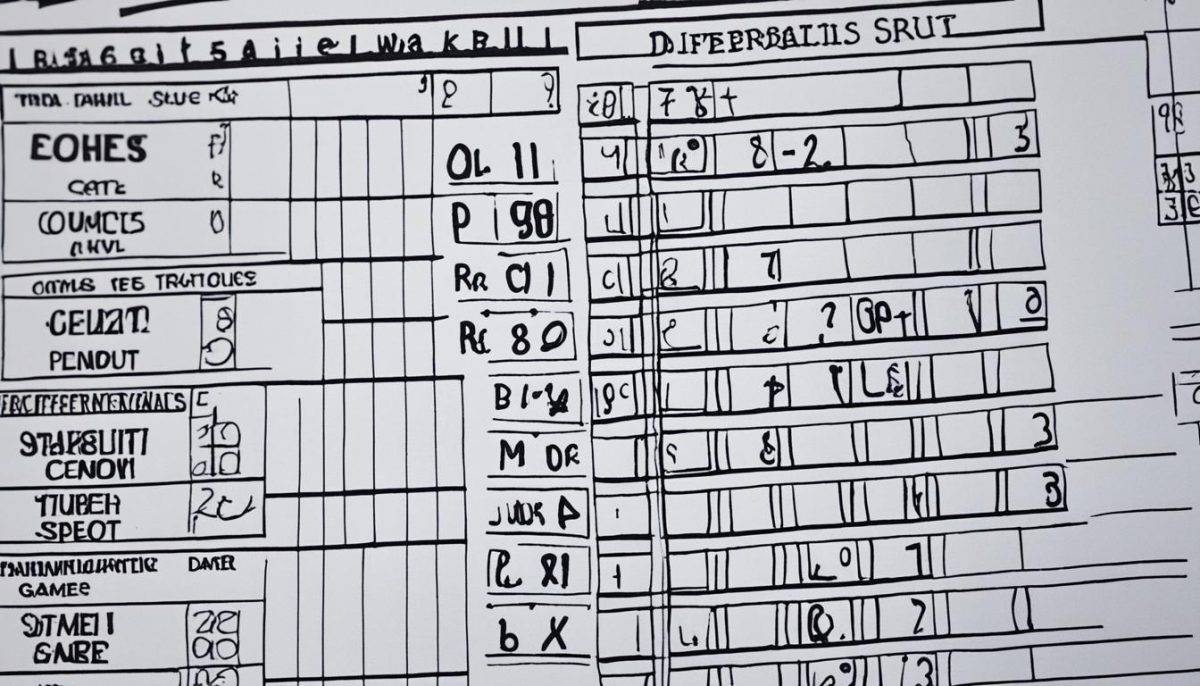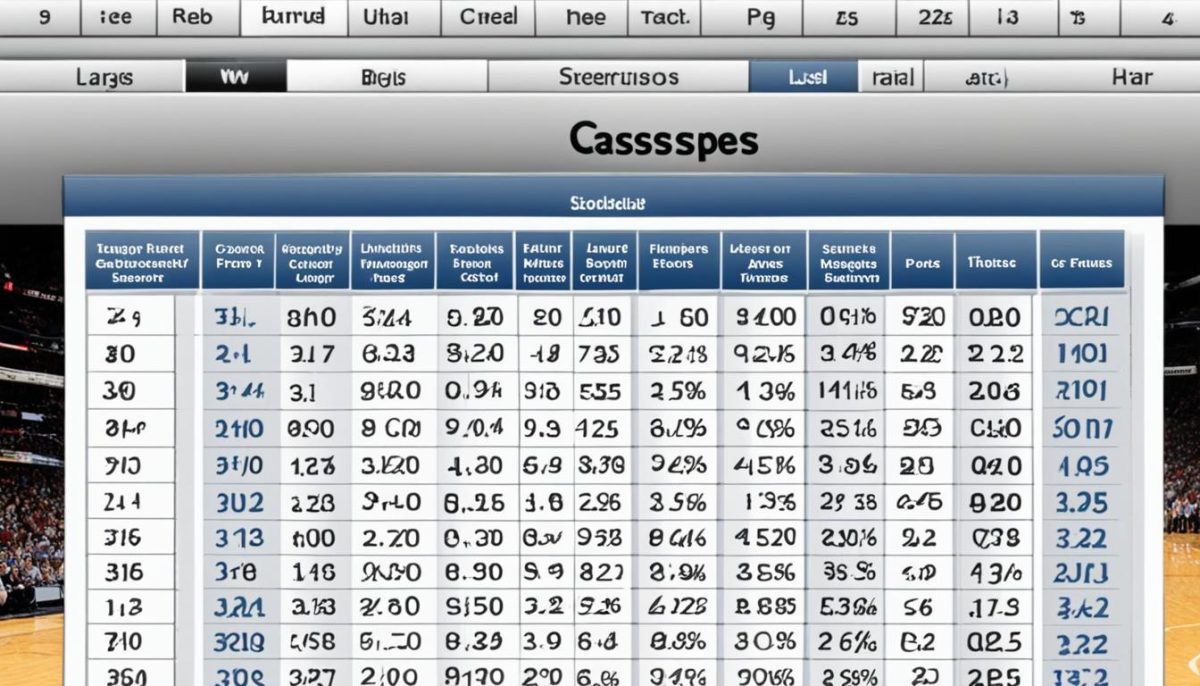Do you think you’re keeping track of the most important stats in basketball? Sure, points scored and rebounds are essential, but what about turnover differential, assist-to-turnover ratio, rebounding margin, free throw differential, and assists on field goals %? These stats provide valuable insights into a team’s performance, allowing coaches to make strategic adjustments and elevate their game. In this article, we’ll delve into the seven best tips for effective tracking using a basketball score sheet, so you can ensure you’re focusing on the stats that truly matter.
Importance of Turnover Differential and Assist-To-Turnover Ratio
The turnover differential and assist-to-turnover ratio are two critical statistics that require close tracking in basketball. By analyzing these metrics, coaches can gain valuable insights into team performance and make informed decisions to improve gameplay.
Turnover Differential
Turnovers can have a significant impact on the outcome of a basketball game. By comparing the total turnovers of both teams, coaches can assess the effectiveness of each team’s ball security. A positive turnover differential indicates that a team has forced more turnovers from their opponent than they have committed themselves. This often translates to additional scoring opportunities and can be a decisive factor in a game’s final score.

Assist-To-Turnover Ratio
The assist-to-turnover ratio provides a clear picture of a team’s ball movement and decision-making on the court. It is calculated by dividing the total number of assists by the total number of turnovers. This ratio reveals how well a team shares the ball and minimizes mistakes that result in turnovers.
“A benchmark of at least a 2:1 ratio is recommended, indicating that a team should aim for at least twice as many assists as turnovers.”
A high assist-to-turnover ratio indicates efficient ball movement and good decision-making, highlighting a team’s ability to create scoring opportunities for their teammates. It demonstrates a strong understanding of the game and effective teamwork, attributes that contribute to overall success.
Tracking these statistics allows coaches to identify areas for improvement and refine strategies accordingly. By focusing on reducing turnovers and increasing assists, teams can enhance their overall performance and increase their chances of winning.
The Significance of Rebounding Margin and Offensive Rebounds
Rebounding is a crucial aspect of basketball that can greatly impact the outcome of a game. By tracking the rebounding margin and offensive rebounds, coaches can evaluate their team’s ability to secure missed shots and gain extra possessions.
In close games, every possession counts. The ability to grab offensive rebounds gives a team additional scoring opportunities and extends their time of possession. This can be a game-changer, especially when facing tough opponents or when struggling to make shots.
To maximize the rebounding advantage, coaches should emphasize the importance of rebounding and teach their players proper techniques. Box-outs, positioning, and timing are all crucial elements to master.
“Rebounding is about attitude and effort. It’s about having the desire to outwork your opponent and fight for every loose ball,” says Coach Pat Riley, a legendary figure in the basketball world.
“Offensive rebounds breathe life into a team’s offense. They give us extra opportunities to score and cause frustration for the opposing team. It’s like giving ourselves a second chance to make things right,” emphasizes Coach Doc Rivers, a respected NBA coach.
Creating an effective rebounding strategy requires a comprehensive understanding of the game and the ability to exploit weaknesses in opponents. By analyzing the rebounding margin and offensive rebounds, coaches can identify areas for improvement and formulate game plans that capitalize on their team’s strengths.
Here’s a breakdown of the rebounding margin and offensive rebounds:
| Team | Total Rebounds | Offensive Rebounds |
|---|---|---|
| Home Team | 43 | 12 |
| Away Team | 37 | 6 |
In this example, the home team outperformed the away team in both total rebounds and offensive rebounds. By securing 6 more offensive rebounds, they gained more scoring opportunities and maintained control of the game.
Looking at the rebounding margin and offensive rebounds can provide critical insights into a team’s performance and overall competitiveness. It enables coaches to make informed decisions, adjust their strategies, and ultimately improve their team’s chances of winning.
Understanding Free Throw Differential
In basketball, free throws are a fundamental aspect of the game that can provide valuable insights into a team’s offensive and defensive strategies. By analyzing the free throw attempts and comparing them to three-point attempts, coaches can gauge which team is more aggressive in attacking the basket and getting to the foul line. Although referees may influence this statistic to some extent, an aggressive offensive team generally earns more opportunities for free throws.
Monitoring the free throw differential allows coaches to assess their team’s offensive aggressiveness and defensive discipline. A positive free throw differential indicates that a team is actively drawing fouls and getting to the free throw line more often than their opponents. Conversely, a negative free throw differential may suggest a lack of aggressiveness or defensive discipline, with the opponent getting to the line more frequently.
Free throw differential is an essential statistic that can reveal important tendencies and strategic advantages. Teams with a positive free throw differential not only have more scoring opportunities from the foul line, but they can also put additional pressure on the opposing team’s defense and potentially force key players into foul trouble.
“Free throws can be game-changers. Increasing our team’s free throw attempts can put us in a favorable position to score and control the pace of the game.”
Implementing Strategies for Free Throw Differential
To increase the free throw differential and capitalize on scoring opportunities, coaches can incorporate several strategies into their game plan:
- Emphasize attacking the basket: Encourage players to be aggressive in driving towards the rim, as this opens up opportunities for drawing fouls and earning free throw attempts.
- Utilize high-percentage plays: Design offensive sets that create favorable matchups and opportunities for close-range shots, increasing the likelihood of drawing fouls and earning free throws.
- Stress offensive rebounding: Strong offensive rebounding provides additional chances for putbacks and second-chance fouls, increasing free throw attempts.
- Practice drawing fouls: Teach players effective techniques such as shot fakes, dribble penetration, and using body positioning to draw contact and earn trips to the free throw line.
By implementing these strategies and monitoring the free throw differential, coaches can maximize their team’s offensive output and put themselves in a position to win games.
| Team | Free Throw Attempts | Three-Point Attempts | Free Throw Differential |
|---|---|---|---|
| Team A | 25 | 10 | +15 |
| Team B | 10 | 15 | -5 |

Analyzing Assists on Field Goals %
Assists on field goals % is a crucial stat that reflects a team’s ability to move the ball effectively and find the open player. It measures the percentage of made field goals that were assisted by a teammate. This stat indicates the level of teamwork and playmaking on a team.
A higher assists on field goals % signifies a team that excels in ball movement, sharing the ball, and creating scoring opportunities for their teammates. It shows that players are actively looking for open teammates and making accurate passes to set up easy baskets. On the other hand, a lower assists on field goals % implies a team that relies heavily on isolation plays or one-on-one scoring, lacking in ball movement and team-oriented offense.
Coaches should aim for an assists on field goals % of 50% or higher, which is generally considered acceptable. However, striving for a percentage of 65% or higher is even better, as it indicates excellent playmaking and unselfishness among players.
To improve a team’s assists on field goals %, coaches should emphasize the importance of quick, accurate passes and encourage players to keep their heads up and look for open teammates. They should teach their players the fundamentals of team basketball and emphasize the value of teamwork.
Benefits of a High Assists on Field Goals %
- Creates a more cohesive and efficient offense
- Leads to higher shooting percentages
- Fosters better team chemistry
- Promotes unselfishness and trust among teammates
- Allows multiple players to contribute to scoring
Example Table: Assists on Field Goals % Comparison
| Team | Assists on Field Goals % |
|---|---|
| Team A | 57% |
| Team B | 42% |
| Team C | 68% |
Above is an example table comparing the assists on field goals % for three different teams. Team C has the highest percentage, indicating strong ball movement and playmaking abilities. Meanwhile, Team B has the lowest percentage, suggesting a need for improvement in their offensive teamwork.
By analyzing and tracking assists on field goals %, coaches can gain valuable insights into their team’s offensive performance and make adjustments to enhance ball movement, teamwork, and overall scoring efficiency.

The Role of Statistics in Game Strategy
Statistics play a crucial role in developing effective game strategies in basketball. By diligently tracking and analyzing basketball stats using a reliable basketball score sheet, coaches can gain valuable insights that shape their approach to gameplay. These statistics enable coaches to make data-driven decisions, adjust their game plan, and communicate effectively with assistant coaches and players.
When evaluating game stats, coaches must consider various factors beyond the numbers themselves. While statistics provide a clear picture of a team’s performance, it is essential to take into account the flow of the game, situational awareness, and individual player dynamics. By combining statistical analysis with in-game observations, coaches gain a more comprehensive understanding of the game and can make strategic adjustments accordingly.
Utilizing basketball stats allows coaches to identify patterns, strengths, and weaknesses, both in their own team and their opponents. This information is invaluable when formulating game strategies for tournaments, rematches, or crucial matchups. By leveraging statistics to identify areas for improvement, coaches can devise game plans that optimize their team’s strengths and exploit their opponents’ vulnerabilities.
Ultimately, the role of statistics in game strategy cannot be understated. By utilizing accurate data from the basketball score sheet, coaches can make informed decisions that have a significant impact on the game’s outcome. Whether it’s adjusting offensive plays, defensive formations, or rotation patterns, statistics provide the foundation for strategic game planning that maximizes a team’s chances of success.






